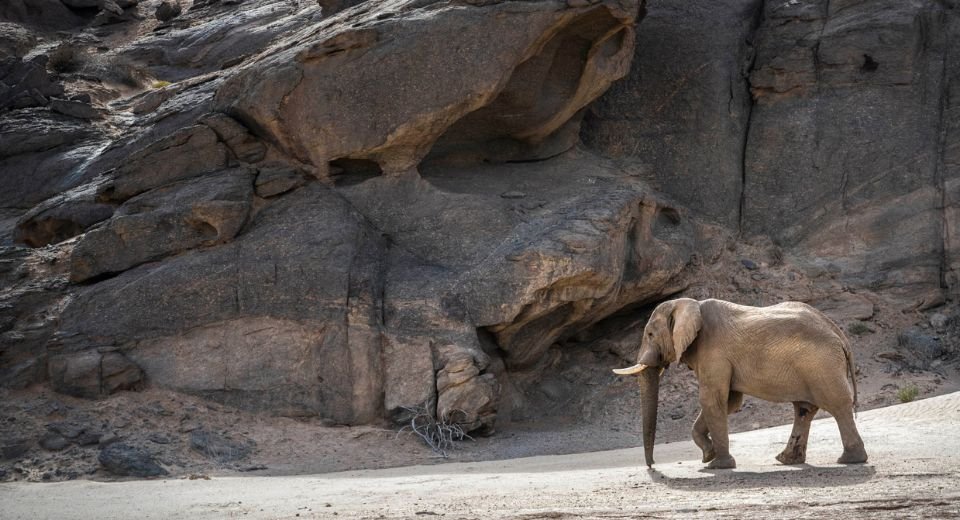HQ Team
September 10, 2024: The Namibian government’s move to cull 83 elephants to feed its population to support its “drought relief” plan has invited the ire of conservationists.
The cabinet approved “contributing game meat to support the drought relief programme by the government” and the Ministry of Environment, Forestry and Tourism will “contribute 723 animals comprising 30 hippos, 60 buffalos, 50 impalas, 100 blue wildebeest, 300 zebras, 83 elephants and 100 elands,” according to an August 26 statement.
The animals are sourced from national parks and “communal areas with sustainable game numbers,” according to the statement, and the National Conference on Human Wildlife Conflict Management in 2023 resolved among other things that elephant numbers need to be reduced to lessen human-wildlife conflict.
“With the severe drought situation in the country, conflicts are expected to increase if no interventions are made. To this effect, 83 elephants from identified conflict areas will be culled, meat will be allocated to the drought relief program under the Office of the Prime Minister.”
Professional hunters and “Safari Outfitters” or private companies, will start culling soon. Already 157 animals have been hunted yielding more than 56,800kg of meat.
Ease ‘grazing pressure’
“This offtake will assist in reducing the negative impact of drought on the conservation of wild animals (and) in managing the current grazing pressure and water availability by reducing wildlife numbers in some parks “where we feel numbers exceed available grazing and water.”
“This exercise is necessary and is in line with our constitutional mandate where our natural resources are used for the benefit of Namibian citizens. This is also a prime example of how the conservation of the game is beneficial.”
African conservationists in a report said no proper environmental or food insecurity assessments were conducted, and the move “only appears to benefit those in important voting areas ahead of the” November election.
Statistics suggest the percentage of the population affected by drought is among the lowest in the region, they said in a joint statement.
There is wide concern that the precedent such a scheme would set, if allowed to continue, would open up the remains of Africa’s fragile wilderness to the arbitrary exploitation of governments, under the guise of humanitarian relief, according to the statement.
Plummeting numbers
According to statistics, elephant numbers have plummeted from over 5 million in 1900, to around 400,000 today; less than the population of a small town, they said.
“The timing of the cull coincides with upcoming elections, leading to speculation that the scheme may be politically motivated, particularly as it exactly targets rural areas where the ruling party needs to increase its support,” one of the 14 unnamed activists said.
The conservationists said they would prefer to be anonymous due to persistent threats, revocation of permits, deportation, or worse.
“This oppressive environment tragically results in media outlets often publishing government statements and strategies without the benefit of opposing views from the conservation community.”
The government plan has reportedly been made without comprehensive environmental impact assessments, stakeholder consultations, game counts, or food insecurity evaluations in the targeted areas.
‘Photographic tourism’
While the recent rainy season was poor, Namibia’s food insecurity statistics, as reported by organisations like the FAO and World Bank, have remained relatively stable, among the lowest compared to other countries in the region, they said.
“One of the most concerning aspects is that wildlife is being culled in national parks, which ought to be safe havens for wildlife populations,” said Dr Adam Cruise, an investigative journalist and academic.
“Photographic tourism is a major sector in the Namibian economy with most visitors flocking to national parks to view wildlife. It may not sit well with tourists if they know the elephant or the zebra they are photographing one day will be butchered for meat production the next.”
“The claim that it will feed hungry citizens impacted by the current drought flies in the face of reason given the current domestic livestock population,” said Mary Rice, director of the Environmental Investigation Agency.
“In addition, the cull will result in a further accumulation of ivory into government stockpiles, which aligns with the government’s ongoing efforts to reintroduce an international ivory trade.”
‘Desert-adapted elephants’
The Namibian Chamber of Environment chief executive Chris Brown said elephants had the best knowledge to survive in arid regions of Namibia.
“A potential concern that needs to be considered here is that the so-called ‘desert-adapted elephants’ should not be harvested, cropped or hunted.
“They are few and have far greater value for tourism than for their meat. Also, these few animals have important ecological functions in this area.”
The “arid-adapted” elephants are an important national asset that must be protected.
“To live in these arid and hyper-arid areas requires more than just normal animal instinct. It requires long memories and detailed local knowledge of where to find food and water under the most difficult conditions and during the worst droughts,” he said.
“If this local knowledge is lost because older animals in the population are removed, it cannot be replaced by new elephants entering the area.”
